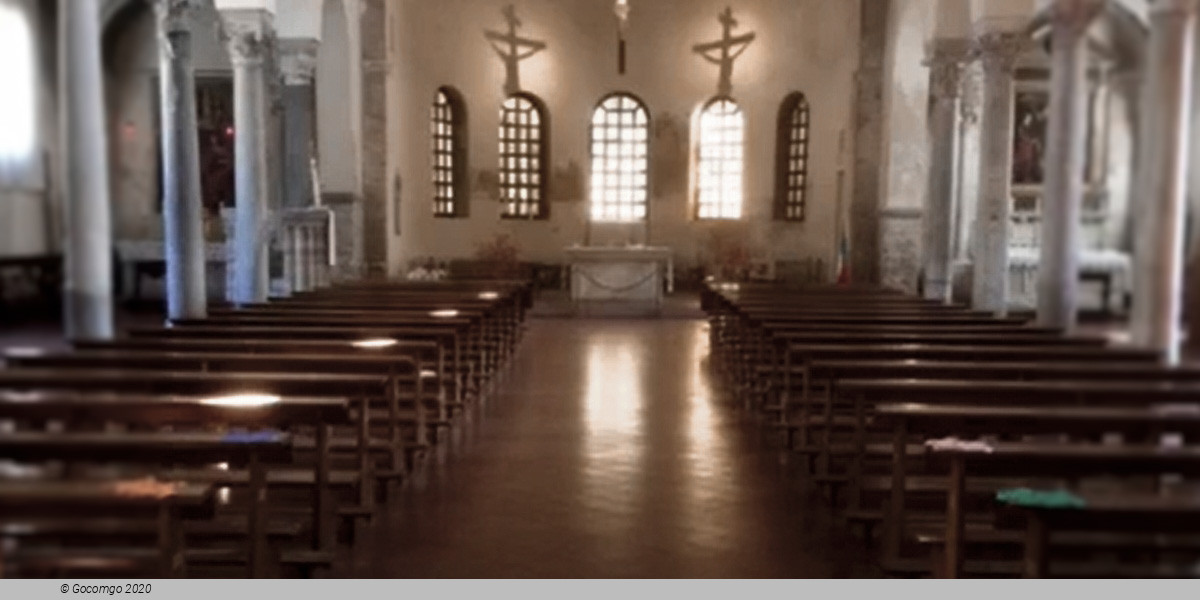Basilica di Sant’Agata Maggiore (Ravenna, Italy)
Basilica di Sant’Agata Maggiore

When it was founded, at the time of Bishop Peter II (his monogram stands out in the central nave) in the late fifth century, it was located on the bank of the Padenna river.
Sant’Agata Maggiore is one of the oldest churches in the city but also one that has undergone major changes over the centuries; nevertheless it still has its own archaic charm. The depth of its original plan is proof of how old the church is, a good two and a half metres “lower” than the other structures in the countryside. On the other hand the bell tower dates back to the sixteenth century. It slightly exceeds the height of the church and is dotted with many small holes. It also has a few single-lancet windows and, at the top, four mullioned windows. It took the place of a four-sided portico, built on a lawn, that covered a cemetery. During the restoration works, carried out between 1913 and 1918 by Giuseppe Gerola, a beautiful prothyrum was added to the façade along with the marble-framed mullioned window placed above it. Inside it has three naves. The basilica floor plan is marked by columns, some of which are topped by sixth-century Corinthian capitals. An old ark, beside the altar of St. Agatha, preserves the ashes of St. Sergius the Martyr and Bishop Agnello. Above the ark there’s a 1546 painting by Luca Longhi depicting St. Agatha between the Saints Catherine of Alexandria and Cecilia. Although Sant’Agata Maggiore has never hosted “shows” it has, proved to be the ideal venue for Sunday Liturgies and those holy music concerts have been part of the Festival’s programme for many years now. A curiosity: documents preserved in the Classense Library describe an exorcism that was successfully carried out in November 1716. Monsignor Evangelista Antonio Coratti, parish priest of Sant’Agata Maggiore, saved the soul of a 12 year-old girl possessed by demons.


